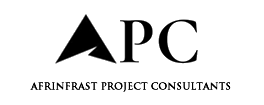
AI has the potential to tackle construction errors that currently cost the economy billions each year – but brings risk unless its use is kept in check, writes John Priestland, chairman of the Technology Working Group of the Get It Right Initiative
The UK construction sector is plagued by avoidable errors that drain up to £25bn from the economy each year. These mistakes – ranging from design inconsistencies and poor coordination to on-site rework and miscommunication – undermine productivity, inflate costs and compromise safety.
GIRI, a not-for-profit membership body founded in 2015, is dedicated to eradicating error by equipping the industry with the knowledge, culture and technologies needed to get it right first time.
The GIRI community is passionate about error and sees the opportunity for new tools to help reduce it. GIRI’s latest report, Artificial Intelligence & Error Reduction: The Opportunities & Challenges, published in July, considers artificial intelligence’s role in this battle.
Based on industry interviews, case studies and extensive research, it concludes that AI presents a genuine opportunity to tackle these entrenched problems. However, it must be deployed thoughtfully to avoid introducing new risks that could exacerbate the very issues it aims to solve.
The report starts from the perspective of the 17 root causes of error from GIRI’s foundational 2016 research, including inadequate planning, design flaws and human factors. AI can address a number of these of these directly – with the most promising areas for improvement being around poor planning and design; inadequate project management; quality control; and compliance and human error.
To do this, AI brings new capabilities principally in the following areas: insight and prediction; automation and assistance; monitoring and verification; collaboration and communication; and decision-making and control.
AI adoption in construction is accelerating, although it remains largely exploratory. Many firms are trialling generative AI tools for low-consequence applications, such as summarising meeting notes, generating reports or automating documentation.
These use cases all help improve productivity in a small way. Yet, the real promise lies in higher-impact areas such as design optimisation, scheduling, quality control and project management – particularly when AI is integrated with structured data, clear workflows and human oversight.
How AI is tackling errors
Our research brought to light a multitude of examples where AI is helping remove common causes of error. For instance, AI excels at preventing information loss during project handovers. Tools can analyse large volumes of documents and models to flag missing specifications, conflicting requirements or incomplete data before the information is passed to the asset owner or client.
In design, AI-driven clash detection identifies interdisciplinary conflicts – such as MEP clashes with structural elements – early in the process, when fixes are cheap and quick.
AI tools can pick up scheduling errors, detecting unrealistic timelines, resource bottlenecks or illogical sequences. On-site, computer vision AI processes real-time photos and videos to spot defects, safety violations or deviations from specifications.
Lack of trust and AI “hallucinations”
Despite these opportunities, attitudes toward AI in construction are mixed, with enthusiasm tempered by caution and a lack of trust. The report notes that AI itself can create new errors.
Generative models are prone to “hallucinations,” producing outputs that seem authoritative but contain inaccuracies, such as flawed engineering assumptions or omitted regulations. In high-hazard environments like construction, this could lead to safety incidents, regulatory breaches or liability issues.
To mitigate these dangers, the report prescribes a structured approach. Begin with risk assessments to determine which tasks are suitable for AI to be used. Adopt chain-of-thought reasoning, where AI articulates its step-by-step logic, allowing users to identify flaws or biases. Crucially, maintain a “human-in-the-loop” model, with AI augmenting expertise, but humans making the final calls on decisions.
These recommendations reflect one of GIRI’s core principles, which is that technology and processes for reducing error will only be successful if they are accompanied by the right culture and behaviours. While there are many innovative opportunities to disrupt
construction through AI, we also need to lean on the expertise and specialist knowledge that already exists within the industry.
The GIRI Technology Working Group, which led on the report, brings together construction practitioners and technology developers around a shared goal to eliminate error. The group investigates how technology can drive quality and error reduction, develops strategies and procedures for AI adoption and shares best practice and success stories between organisations.
AI is coming, but we need to use it wisely and well – to further reduce existing errors and to prevent AI itself causing new ones.
The post AI in construction: Proceed with care appeared first on Planning, Building & Construction Today.

